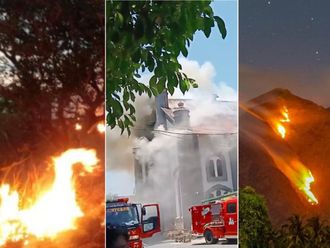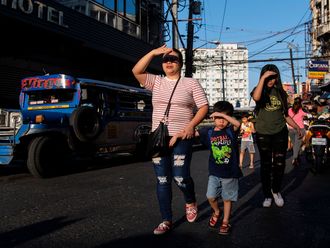Manila: The number of known HIV cases in the Philippines reached 10,000 based on 2016 records with the country having the fastest growing epidemic of the viral disease in Asia and the Pacific, officials said.
The country needs to act fast to arrest the growth of cases, Eamonn Murphy, Director United Nation Programme on HIV/Aids (UNAIDS) Regional Support Team for Asia-Pacific said during a forum in Manila. “The Philippines has a small window of opportunity to act now and stop a major HIV epidemic from taking hold,” he said.
Based on a UNAIDS Report on the global HIV epidemic, the number of new infections in the Philippines has more than doubled during the past six years. From an estimated 4,300 in 2010 to 10,500 in 2016, the country now the country with the fastest growing HIV epidemic in Asia and the Pacific.
HIV stands for Human Immunodeficiency Virus, it is the microorganism that causes Aids or Acquired Immune Deficiency Syndrome, a disease where the body has significantly lower resistance to infection.
The Philippines and has also become one of eight countries that account for more than 85 per cent of new HIV infections in the region.
But while the Philippines has the fastest growing HIV epidemic in terms of percentage increase, the number of new infections in the Philippines is less compared to other countries in the region.
Murphy said the country needs “redirect its focus on the people most at risk and where they are located.”
“If HIV programming is re-directed to focus on the people most at risk and where they are located, I’m sure the country cannot only return to a stable situation but even end the Aids epidemic as a public health threat by 2030,” he said.
Recent studies showed that while the Philippines has controlled the spread of HIV among female sex workers, a shift in the epidemic was noted in 2007 — particularly among males who have sex with other males and persons who inject drugs.
Philippine data showed that in 2016, 83 per cent of newly reported HIV cases occurred among males who have sex with males (MSM) and transgender women who have sex with males (TGW). According to the Department of Health, majority of the new infections are occurring among 15 to 24 year old MSM and TGW.
Armed with this information, the Philippines has retooled its programme to expand HIV services for males who have sex with males and transgender women.
It also opened clinics that cater specifically to their needs in urban areas, where the risk of HIV is higher. The strategy is to focus on 117 cities where 80 per cent of the new infections have been reported and to open in each such city at least one HIV clinic which has convenient evening hours for working people, and is a one-stop shop that provides prevention, counselling, laboratory work-up, and treatment services. These are the Sundown clinics. The government has also taken measures towards enabling rapid HIV screening and delivery of test results.
“HIV is one of the top health priorities for the government of the Philippines,” said Dr Paulyn Jean Rosell-Ubial, the Secretary of the Department of Health. “We have significantly increased the budget allocated to HIV in the past few years, and are now implementing programmes which we expect to have a positive impact.











